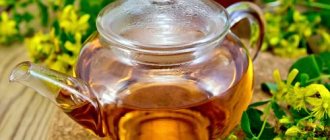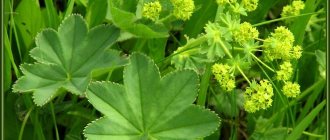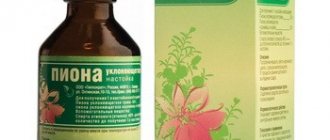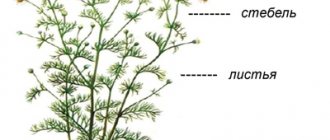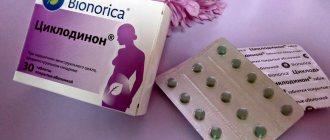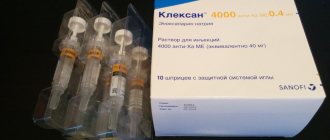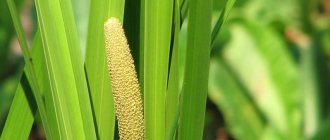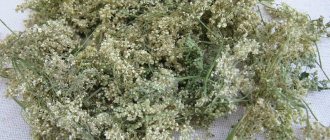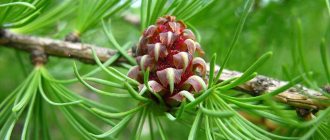St. John's wort is a perennial plant belonging to the St. John's wort family. The seedling received its name because of its ability to cause severe poisoning in ruminants (especially white and light-spotted ones). However, St. John's wort has a healing effect on the human body. Based on it, many pharmacological, homeopathic, phytotherapeutic and cosmetic products are made.
St. John's wort is used to treat digestive, neurological, dermatological and gynecological disorders. Considering that the plant has a balsamic smell and a bitter-resinous taste, it is successfully used in alcoholic beverages and canned fish production.
What does St. John's wort treat?
The two main areas of use of St. John's wort are diseases of the digestive system and skin wounds. Systemic use of decoctions and tinctures can act as an antispasmodic for pain in the intestines, bile ducts and vasoconstriction. In addition, the herb stimulates blood circulation and reduces the level of inflammation of the mucous membranes of the gastrointestinal tract. St. John's wort is active against bacteria - it prevents them from multiplying, nullifying the course of the disease.
The use of St. John's wort has a positive effect with early initiation of treatment for flatulence, as well as with exacerbation of chronic colitis, intestinal disorders, and diagnosed biliary dyskinesia.
In relation to the treatment of urolithiasis, St. John's wort is effective as a diuretic. Due to its diuretic properties, it increases the volume of urine produced, thereby helping to remove small stones from the body.
St. John's wort tincture can be used for helminthic infestations - enterobiasis. And medications using plant extract are prescribed to patients with weak capillary walls, as well as with impaired peripheral circulation.
Use in folk medicine
Due to its rich ingredient composition, St. John's wort is very popular in folk medicine (along with chamomile). It is added to almost all herbal complexes, mixtures, and face masks.
Plant forms of the plant used in folk medicine.
Fresh leaves, shoots and inflorescences
The crushed raw materials are used as a bactericidal agent for healing wounds, bruises, burns and abrasions. In addition, medicinal mixtures are prepared based on St. John's wort to eliminate allergic rashes and itching from insect bites.
Oil
Fill a half-liter container with St. John's wort flowers (700 g). Pour unrefined vegetable oil (peach, almond, olive) over the grass. “Squeeze” the flowers tightly (so that they are covered with liquid), seal the jar with a lid, and move the container to a dark place for 30 days. After infusion is complete, strain the mixture and pour into an opaque bottle. St. John's wort oil is used to “fight” boils, herpes, trophic ulcers, hemorrhoids, mastopathy, periodontal disease, and rosacea.
Infusion
To prepare the drug you will need 50 g of St. John's wort (dry) and 200 ml of boiling water. The ingredients are mixed and then infused for 3 hours in a thermos. The therapeutic mixture is taken three times a day, 50 ml. The composition is effective in the complex therapy of gastritis, cystitis, colitis, hypotension, headaches, cholelithiasis. In addition, the infusion is suitable for rinsing the mouth (for gingivitis, stomatitis, colds) and treating inflammatory processes on the skin (in the form of lotions).
Decoction
Dry St. John's wort stems (25 g) are poured with water (250 ml), and then boiled for 15 minutes over low heat. The product is used both internally (for the treatment of intestinal infections and diarrhea) and externally (for washing and rinsing hair).
Alcohol tincture
The composition is prepared from St. John's wort and vodka (in a ratio of 1:7). If desired, you can use medical alcohol (in a ratio of 1:10). After mixing, the mixture is infused in a dark place for 5-6 days. After the specified time, boiled water is added to the herbal solution (in a ratio of 1:5). The drug is used as a warming compress for joint and muscle pain.
Tea
Pour 7 g of St. John's wort herb into the teapot. If desired, you can add strawberries and linden blossom. Pour boiling liquid over the raw material, and then leave for 7-10 minutes under a closed lid. Tea is consumed to strengthen the immune system and relieve nervous tension (together with honey or cranberry jam).
St. John's wort oil
This is an excellent antiseptic, which is recommended to lubricate burns (even extensive ones), wounds, abrasions, contusions and bruises to disinfect and accelerate tissue regeneration.
Other uses of St. John's wort oil:
- Prevention of influenza and respiratory infections. To prevent colds (especially during periods of vitamin deficiency), St. John's wort oil is instilled into the nasal sinuses (2 drops three times a day). When rhinitis appears, the frequency of irrigation is increased to 7-9 times a day (every 90 minutes). Along with this, it is advisable to take St. John's wort oil orally (5 ml each).
- Diseases of the digestive tract (ulcers, gastritis, enterocolitis, duodenitis, irritable bowel syndrome). To regenerate the mucous membranes, St. John's wort concentrate is taken 15 ml twice a day (50 minutes before meals). The course of treatment with oil is 21 days. After 10 days, the therapy is repeated.
- Inflammation of the skin (abscesses, boils, burns). St. John's wort oil is applied to the cleansed damaged dermis for 20 minutes (in the form of applications and medicinal dressings). With daily treatment of the skin, the regeneration of epithelial tissue accelerates (including the healing of purulent scars). Along with this, the oil mixture is used for mastitis, bruising, muscle strains, cracked nipples (in nursing mothers).
- Vitiligo. To reduce foci of depigmentation, St. John's wort is used both internally (in the form of an oil infusion) and externally (as part of applications). The concentrate is consumed 10 ml three times a day (preferably 3 weeks). After 7 days, the treatment is repeated. To obtain a pharmacological effect, it is important to carry out 8 cycles of therapy (with weekly breaks).
During oral administration, the affected skin is lubricated with St. John's wort oil (by applying a napkin soaked in the healing mixture for 40 minutes). The course of therapeutic wraps is 40 days.
- Stomatitis, periodontal disease, gingivitis. For inflammation of the oral cavity, St. John's wort “poultices” are used. To do this, a cotton swab in a herbal decoction is applied to the damaged areas of the gums for 20 minutes.
- Haemorrhoids. To reduce pain, a composition is prepared from St. John's wort oil (15 ml) and chamomile ether (15 ml). Then the mixture is combined with 100 ml of boiled water and injected into the anus from a microenema. After this, turn over on your side or stomach for 5 minutes.
To enhance the antiseptic effect, St. John's wort oil can be combined with other bactericidal plants (celandine, chamomile, calendula).
Is it worth taking St. John's wort for vitiligo?
Studies of the plant have shown that St. John's wort has photosensitizing properties. Together with hypericin, these properties have shown to be effective in the treatment of vitiligo. This disease develops against the background of autoimmune processes and stress, as a result of diseases of the internal organs, due to which the level of melanin in the skin, which is responsible for the color of the epidermis, is significantly reduced. The use of St. John's wort helps restore immunity by improving the functioning of the digestive system and reducing the level of free radicals.
In addition, if St. John's wort juice is applied to areas of skin with a deficiency of pigment, and the treated areas are exposed to direct sunlight, then there is a high probability of accumulation of melanin in skin cells, which can reduce the severity of uneven color.
Recipes and regimens
Alternative medicine has a large number of recipes for preparing medicines from St. John's wort. For greater effectiveness, additional ingredients may be used.
Regardless of the formulation, oral medications should be taken in courses to avoid the body becoming accustomed to the therapeutic effect and reduce the risk of side effects. The maximum course of treatment is 2-3 weeks. Next you should take a break for at least 2 weeks.
Alcohol tincture
Alcohol tincture has the greatest extraction of beneficial substances, but at the same time, it has the most contraindications. To make an alcohol-based product you will need:
- 1/3 cup – dried raw materials;
- 0.5 l – vodka or homemade moonshine.
Mix all ingredients in a glass jar and leave for 2-3 weeks in a dark place at room temperature. Next, strain the mixture. Store in a cool place for no more than 2 years.
Water decoction
To prepare a water-based decoction you will need:
- 5 tbsp. l. – dry herbal mixture of St. John's wort;
- 1 l – water.
Place the raw material in a thermos, pour boiling water over it, leave for 3 hours, strain. After cooling, you can add honey to improve the taste. Store in the refrigerator for no more than 5 days.
Tea
St. John's wort tea is the easiest and fastest way to strengthen the immune system during the off-season, for colds, viral and bacterial infections. To prepare it you need 1 tsp. dry vegetable raw materials, pour 1 cup of boiling water, leave for 3-5 minutes.
You can brew tea in a regular teapot. To improve the taste and add additional benefits, you can add mint, oregano, and honey to the tea. The recommended daily dose is no more than 2 cups per day. The product must be prepared immediately before use.
Oil
To prepare St. John's wort oil you will need the following ingredients:
- 1 part – dry plant materials;
- 2 parts – vegetable oil: sunflower, olive.
How to take St. John's wort for depression
St. John's wort has the ability to regenerate cells of the nervous system, which improves sleep, relieves anxiety and eliminates constant psychological discomfort.
St. John's wort as a remedy for depression is taken as part of an herbal mixture, a tablespoon of which is steamed in 200 ml of hot water. The resulting drink is drunk half an hour before bedtime. The duration of therapy is from 1 month, in accordance with the doctor’s recommendations. This decoction is useful not only for depressive disorders, but also for mental stress.
List of useful substances
The high value as a medicinal raw material is due to the mass of useful elements contained in the St. John's wort herb:
- phytoncides provide an antimicrobial effect;
- tannins have an astringent, anti-inflammatory effect;
- vitamins C, E, P contribute to the proper functioning of internal organs and systems;
- provitamin A (carotene) improves the functioning of the organs of vision, protects against viruses;
- nicotinic acid (vitamin PP) is good for the heart;
- isovaleric acid provides a sedative effect;
- flavonoids have antispasmodic properties;
- thanks to its numerous essential oils, St. John's wort is valued in cosmetology;
- microelements (calcium, potassium, iron, magnesium) ensure a normal balance of substances in the body;
- macroelements (molybdenum, chromium, aluminum, cobalt, selenium, nickel and others) are necessary for the normal functioning of the body;
- azulene has a positive effect on the skin: moisturizes, accelerates cell regeneration;
- hypericin has a beneficial effect on the central nervous system.
In medicine, not only the leaves of the herb and young shoots of St. John's wort are used, but also its roots. They contain resins, essential oils, quercetin and other essential substances.
How to distinguish medicinal St. John's wort from other varieties
St. John's wort is a perennial plant. Botany knows more than 450 of its species. St. John's wort is widespread throughout our country. Refers to herbs. Its height varies from 30 cm to 1 meter. The root system is superficial. The stem of the medicinal plant is dihedral, which diverges into many branches closer to the top. The leaves are arranged oppositely, they are smooth, oval, and may be slightly elongated. The name of this type of St. John's wort appeared precisely because of the appearance of the leaves - they are covered with small, almost transparent spots, called holes. Its flowers are bright yellow and appear in the summer months. In autumn, the buds ripen with small brown seeds hidden inside them.
Procurement of raw materials
The collection of medicinal raw materials is carried out during active flowering - from June to August. To do this, use a sickle or knife to cut off the top 30 cm of the plant. This should be done in dry, sunny weather.
The cut shoots are dried naturally, in the open air. To do this, the raw materials are laid out on a baking sheet or tied in bunches in a dry, dark, well-ventilated room. To ensure uniform drying, the raw materials are periodically turned over. The process can take up to 2 weeks.
The leaves and stems of the finished raw material easily break with a characteristic crunch. It is recommended to store St. John's wort in glass containers, canvas bags or cardboard boxes in a dry place. The shelf life of dried herbs is no more than 3 years.
special instructions
During treatment with St. John's wort tincture, ultraviolet radiation should be avoided, including the use of a UV lamp, visiting a solarium, and prolonged exposure to the sun.
A single adult dose of tincture contains 0.36 g of alcohol. In this regard, driving vehicles and engaging in activities that require increased attention and rapid psychomotor reactions are not recommended. As you can see, this is a very powerful remedy - St. John's wort tincture. The benefits and harms of drugs based on this herb largely depend on compliance with the instructions for use and dosage.
Now let’s talk about preparations based on St. John’s wort, which you can prepare yourself at home.
Tea
Tea with St. John's wort is necessary for everyone who cannot sleep in the evening, or experiences a feeling of anxiety and mental fatigue. In addition, it is effective as part of complex therapy for colds and fever. You can add other herbs to tea with St. John's wort if desired. For example, mint, rosehip, linden. St. John's wort is often added to your favorite black tea.
To prepare herbal tea with St. John's wort, take two tablespoons of the raw material and pour 500 ml of boiling water. Let the tea steep for fifteen minutes. You can add honey.
Why is the plant so named?
The plant received this name not by chance: people noticed that animals (spotted and white) who ate it in hot weather often became seriously ill, and if they ate the grass too intensively, they could even die. St. John's wort is a herb that has the property of increasing the sensitivity of ruminants to solar radiation.
Under the influence of the grass, animals of light colors begin to experience severe skin itching, during which they bite themselves until they bleed, the skin becomes covered with tumors, which soon turn into non-healing ulcers. This is very important for cattle breeders to know and to prevent excessive consumption of St. John's wort by animals.
Contraindications, possible harm
Contraindications to taking herbal remedies:
- Hypertension. The grass increases blood pressure: if consumed, the pathology will worsen.
- Allergy to plants of the St. John's wort family, individual intolerance to one of the components included in the composition.
- Upcoming or recent transplantation. The grass contains substances that can cause rejection of foreign tissues and organs.
- Taking contraceptives. When used together, the effects of contraceptives are neutralized and hormonal levels are disrupted.
- Mental illnesses. The plant can cause the development of manic syndrome, increase irritability or apathy.
- Taking antidepressants. The active substances of St. John's wort enhance the effects of drugs and can provoke hallucinations and convulsions.
- Treatment with antibiotics and heart medications. The herb stimulates their rapid elimination: the therapeutic effect is reduced.
This is how St. John's wort blooms
- confusion;
- sleep disturbances;
- nervousness and aggression;
- nausea, vomiting;
- rashes and itching;
- skin pigmentation;
- fatigue;
- disruption of the liver and kidneys;
- headache;
- dryness and bitterness in the mouth;
- flatulence;
- pain in the stomach area.
During treatment with St. John's wort, you should avoid sunbathing. The limitation is due to the fact that the herb increases the sensitivity of the skin to ultraviolet radiation.
Is it possible for children
Children are allowed to give medicinal drinks with St. John's wort from the age of 12. However, herbal remedies can be used externally in the absence of allergies.
Application options:
- Adding decoction to baths from 3 months. The plant helps get rid of heat rash and other inflammations on the skin, normalize the baby's sleep, and improve appetite.
- Treatment of cuts and sunburns with St. John's wort infusion from 3 years of age.
- Rinsing the mouth with a decoction diluted with water for stomatitis from 4 years of age. St. John's wort gets rid of bacteria and speeds up the healing of painful ulcers.
- Compresses for burns, wounds, fractures from 3 years.
Teenagers are given half the adult norm of medications. If after the first dose the child does not experience any adverse reactions, you can gradually increase the dose.
